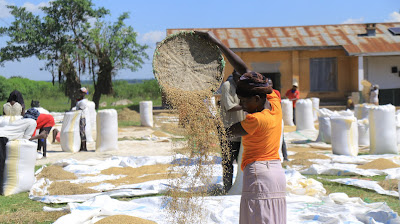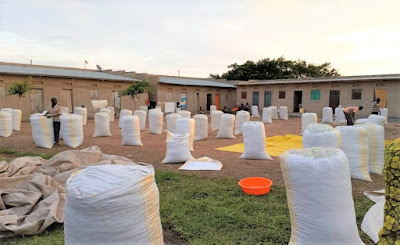Integration of Sustainable Land Management in farming practices
Sustainable Land Management (SLM) strategies and practices enable farmers and communities to adapt, as well as become more resilient, to climate change by increasing food production, conserving soil and water, enhancing food security and restoring productive natural resources. SLM refers to the adoption of land use systems that, through appropriate management practices, enables land users to maximize economic and social benefits from the land while maintaining or enhancing ecological support functions of land resources.
In most of the agricultural production zones, the soils are old with little mineral nutrient reserves. Many cases where phosphorus, potassium and calcium, are below critical levels, it means that there is:
• a decrease in fallow periods due to increased pressure on land
• those under ‘fallow’ are in poor state [abandoned rather than deliberate fallow]
• rain-fed agriculture
• continuous cultivation without fertility enhancement
• increased nutrient mining with low inputs and
• limited use of land management practices
The Uganda Strategic Investment Framework for Sustainable Land management (2010-2020) targets four land degradation hotspots or agro-ecological zones, the Southwestern and Eastern Highlands, Lake Victoria Crescent region, the cattle corridor, Eastern and Northern Uganda. These are also the zones where some of the 57 ACDP districts are located.
 |
|
Bonyo of Namanyonyi subcounty in Mbale district
integrates SLM in maize field |
ACDP
Sustainable land management Coordinators have been conducting trainings for field extension workers from the 12 coffee pilot
districts. These officers are now skilled in the integration of SLM and ISFM. The trainings
also focus on how to lay out a functional field demonstration garden/local
seed multiplication plot.
The SLM technologies that the extension staff have been
trained on include SLM/CSA technologies and practices, approaches for scaling
up of SLM Technologies, research evidence on SLM and CSA by NARO, guidelines on
how to establish functional demonstration garden/local seed multiplication
plot, engaging youth in agriculture, soil and water conservation, success story
writing, coffee agronomy, Agroforestry technologies, fertilizers use and
calculations, field soil sampling and testing. At field level, the effects of
integrating SLM practices can now be seen in farmers fields.



Comments
Post a Comment